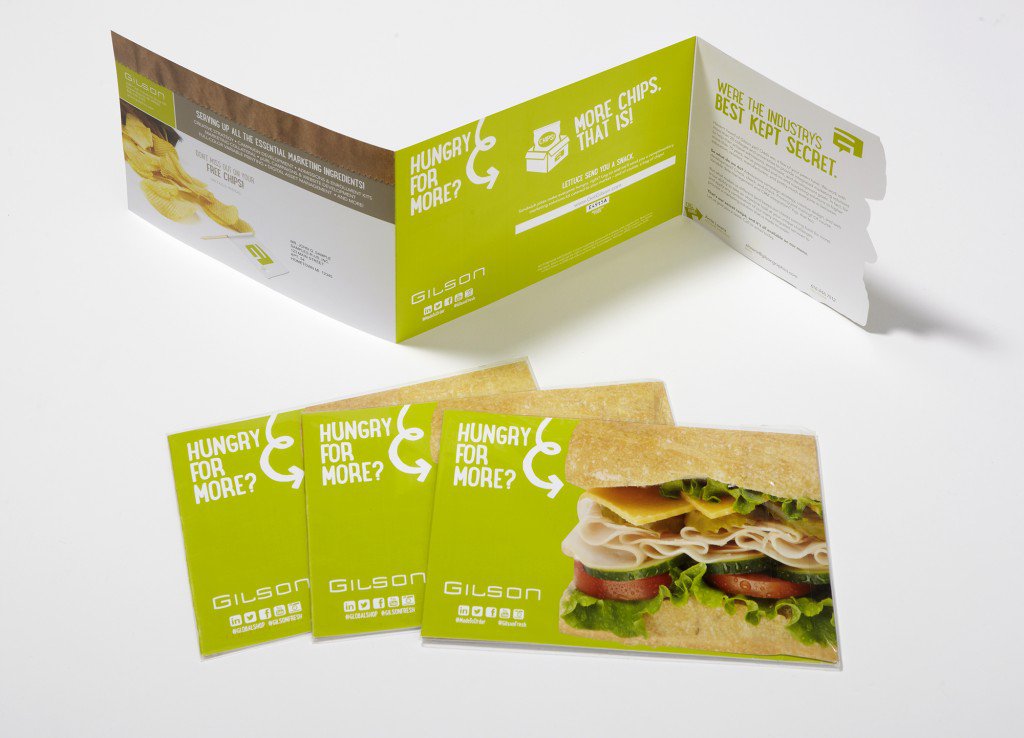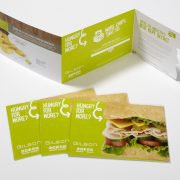Variable Data: More than a Name
If there’s one thing Gilson’s marketing team knows, it’s the importance of using your data to your advantage. So when we set out to plan our pre-show campaign for GlobalShop, we carefully considered the use of variable data.
Approaching Variable Data
Traditional variable data might conjure up images of flashy postcards with glaringly obvious personalization (“Hey Jim! You’ve won!”). But we have a much more sophisticated approach that uses data to add value to the message for a specific audience. That means completely different messages for completely different industries—all printed at the same time from a single database.
Let’s take a look at the data we had at our disposal. We knew we needed to promote our upcoming presence at GlobalShop to a fairly specific audience. Because of the time and effort being invested in the development of that campaign, we asked ourselves: how can we expand this into the other industries we serve?
The answer was simple: variable data. One campaign, one timeline, one print-run—all for multiple audiences.
Using the theme of a sandwich to describe Gilson’s multi-layer services, we designed a series of marketing materials to showcase our technological capabilities and introduce our brand story. Gilson’s business model can be described as having many “ingredients” which clients may choose in any combination to meet their particular business needs.
Changing Situations
But understanding that different industries use our services differently, we tailored each message to address customers’ unique challenges and worded the message in a language familiar to their particular industry. Retail prospects resonate with terms like “kit-packing,” “POP displays,” and “wayfinding signage.” Education prospects speak in terms of “admissions collateral” and “student retention.” For every core audience, Gilson communicated this key underlying message: “We get you.”
Odds are, your customers are the same. Whether you sell to the B2B marketplace or the non-profit sector, you have the ability to speak to each audience on a personal level. Thanks to advancements in digital inkjet technology, all this variable versioning can be done on the fly. And it should be. Why let the clock tick on stacks of collateral just waiting to go out of date? And don’t forget, variable data doesn’t apply only to personalization; it also allows you to try out different marketing messages on your audience, monitor your results, and make improvements to your campaign along the way.
To touch briefly on the guts of the campaign, we developed one central message and three simultaneous versions related to our targeted industries. Each piece was further customized with individual sales rep information, a personalized URL, and a unique reward code.
Every prospect was tracked through a communication channel with multiple touchpoints. If the individual did not respond to a piece within an allotted time, a second piece was sent, then a third until the prospect engaged with the campaign in some manner. The final stage of the campaign was the follow-up piece which was also fully variable—right down to the name on the box. Gilson’s sales reps were notified of their lead responses and engaged prospects with a follow-up call or emails to continue the dialog.
The Results
In all, 10.2% of the campaign recipients responded and received their marketing kit. (Response rates varied by industry, with the coldest leads—those Gilson had never before contacted—generating only a 1% to 1.6% response rate. The warmest leads came from those who we’d already been in contact with, resulting in a 10.8% to 12.7% response rate. Account executives reported an uptick in expanded business opportunities with clients who had previously done business with Gilson in one or two of our service areas.
At the end of the day, your marketing campaigns are only as effective as the data used to generate them. But one-to-one communication doesn’t have to break the bank. In fact, increasing the size of your prospect pool can help drive down your overall per-piece cost, reaching a greater audience without sacrificing personalization.
Want to learn more about maximizing the power of your data? Get in touch with a Gilson account executive or fill out a request for more information.










